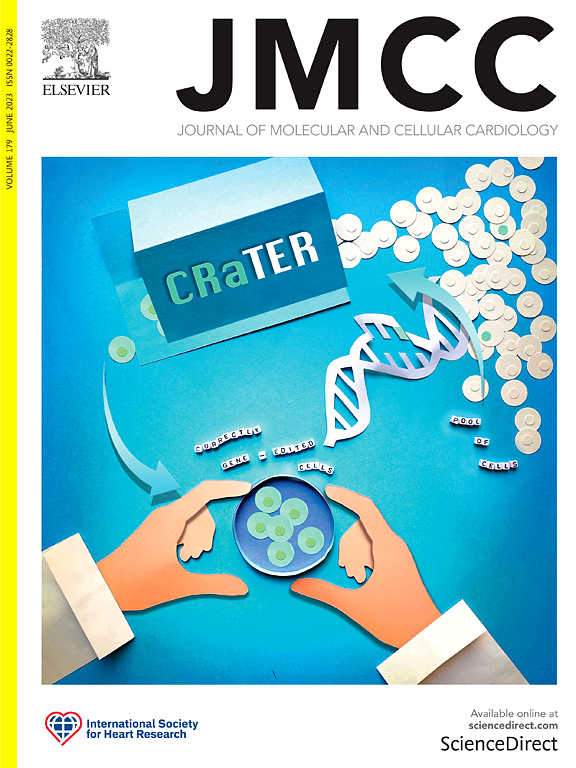Clockwork conditioning: Aligning the skeletal muscle clock with time-of-day exercise for cardiometabolic health
IF 4.9
2区 医学
Q1 CARDIAC & CARDIOVASCULAR SYSTEMS
引用次数: 0
Abstract
Circadian rhythms have evolved to synchronize gene expression, physiology, and behavior with time-of-day changes in the external environment. In every mammalian cell exists a core clock mechanism that consists of a transcriptional-translational feedback loop that drives rhythmic gene expression. Circadian disruption, as observed in shift workers and genetic mouse models, contributes to the onset and progression of cardiometabolic disorders. The central clock, located in the hypothalamus, is uniquely sensitive to external light cues, while the peripheral clocks are responsive to non-photic stimuli such as feeding and activity in addition to signals from the central clock. Recent research has illustrated the sensitivity of the skeletal muscle circadian clock to exercise timing, offering a promising avenue for therapeutic intervention in cardiometabolic health. Here we provide an in-depth examination of the molecular mechanisms underlying skeletal muscle clock function and its impact on cardiometabolic pathways, including glucose and lipid metabolism, as well as inflammation. To highlight the role of exercise as a time-cue for the skeletal muscle clock, we discuss evidence of exercise-induced shifts in the skeletal muscle clock and the differential response to exercise performed at different times of the day. Furthermore, we present data in support of time-of-day exercise as a potential therapeutic strategy for mitigating cardiometabolic disease burden. By exploring the relationship between the skeletal muscle clock, exercise timing, and cardiometabolic health, we identify new areas for future research and offer valuable insights into novel therapeutic approaches aimed at improving cardiometabolic disease outcomes.
时钟调节:调整骨骼肌时钟与心脏代谢健康的日常锻炼时间
昼夜节律已经进化到使基因表达、生理和行为与外部环境的时间变化同步。在每一个哺乳动物细胞中都存在一个由转录-翻译反馈回路组成的核心时钟机制,该机制驱动有节奏的基因表达。在轮班工人和遗传小鼠模型中观察到的昼夜节律中断有助于心脏代谢疾病的发生和进展。位于下丘脑的中央时钟对外部光线信号非常敏感,而外围时钟除了对来自中央时钟的信号外,还对进食和活动等非光刺激做出反应。最近的研究表明,骨骼肌生物钟对运动时间的敏感性,为心脏代谢健康的治疗干预提供了一条有希望的途径。在这里,我们深入研究了骨骼肌时钟功能的分子机制及其对心脏代谢途径的影响,包括葡萄糖和脂质代谢,以及炎症。为了强调运动作为骨骼肌时钟的时间线索的作用,我们讨论了运动引起的骨骼肌时钟变化的证据,以及一天中不同时间对运动的不同反应。此外,我们提供的数据支持每天锻炼作为减轻心脏代谢疾病负担的潜在治疗策略。通过探索骨骼肌时钟、运动时间和心脏代谢健康之间的关系,我们确定了未来研究的新领域,并为旨在改善心脏代谢疾病结果的新治疗方法提供了有价值的见解。
本文章由计算机程序翻译,如有差异,请以英文原文为准。
求助全文
约1分钟内获得全文
求助全文
来源期刊
CiteScore
10.70
自引率
0.00%
发文量
171
审稿时长
42 days
期刊介绍:
The Journal of Molecular and Cellular Cardiology publishes work advancing knowledge of the mechanisms responsible for both normal and diseased cardiovascular function. To this end papers are published in all relevant areas. These include (but are not limited to): structural biology; genetics; proteomics; morphology; stem cells; molecular biology; metabolism; biophysics; bioengineering; computational modeling and systems analysis; electrophysiology; pharmacology and physiology. Papers are encouraged with both basic and translational approaches. The journal is directed not only to basic scientists but also to clinical cardiologists who wish to follow the rapidly advancing frontiers of basic knowledge of the heart and circulation.

 求助内容:
求助内容: 应助结果提醒方式:
应助结果提醒方式:


